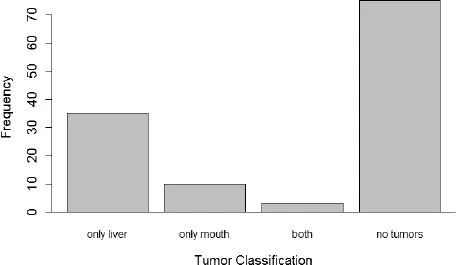
- 316 pages
- English
- ePUB (mobile friendly)
- Available on iOS & Android
About this book
-->
This textbook introduces the basic concepts from probability theory and statistics which are needed for statistical analysis of data encountered in the biological and health sciences. No previous study is required. Advanced mathematical tools, such as integration and differentiation, are kept to a minimum. The emphasis is put on the examples. Probabilistic methods are discussed at length, but the focus of this edition is on statistics.
The examples are kept simple, so that the reader can learn quickly and see the usefulness of various statistical and probabilistic methods. Some of the examples used in this book draw attention to various problems related to environmental issues, climate change, loss of bio-diversity, and their impact on wildlife and humans.
In comparison with the first edition of the book, this second edition contains additional topics such as power, sample size computation and non-parametric methods, and includes a large collection of new problems, as well as the answers to odd-numbered problems. Several sections of this edition are accompanied by instructions using the programming language R for statistical computing and graphics.
-->
Request Inspection Copy
--> Contents:
- Probability:
- Introduction to Probability
- Axioms of Probability
- Conditional Probability
- Discrete Random Variables
- Continuous Random Variables
- Supplementary Problems (Probability)
- Statistics:
- Introduction to Statistics
- Confidence Intervals
- Hypothesis Testing
- Comparison of Two Independent Samples
- Paired Samples
- Categorical Data
- Regression and Correlation
- Supplementary Problems (Statistics)
- Additional Topics:
- Sample Size and Power
- Non-Parametric Methods
- Answers to Odd-Numbered Problems
- Tables
-->
--> Readership: Undergraduates studying probability and statistics, especially in the life and natural sciences. -->
Probability Theory;Statistical Inference;Biostatistics;Statistics;Calculus-Based Statistics;Genetics;Biology;Ecology;Health;Life Sciences;Natural Sciences Key Features:
- This edition contains a large collection of new problems and includes the answers to odd-numbered problems
- Several sections of the book are accompanied by a technology component containing instructions using the programming language R for statistical computing and graphics
- Although probabilistic methods are discussed at length in the book, the focus of this edition is on statistics, with a new chapter dedicated to non-parametric methods in statistics
Frequently asked questions
- Essential is ideal for learners and professionals who enjoy exploring a wide range of subjects. Access the Essential Library with 800,000+ trusted titles and best-sellers across business, personal growth, and the humanities. Includes unlimited reading time and Standard Read Aloud voice.
- Complete: Perfect for advanced learners and researchers needing full, unrestricted access. Unlock 1.4M+ books across hundreds of subjects, including academic and specialized titles. The Complete Plan also includes advanced features like Premium Read Aloud and Research Assistant.
Please note we cannot support devices running on iOS 13 and Android 7 or earlier. Learn more about using the app.
Information
PART 2
Statistics
Chapter 7
Introduction to Statistics
7.1 Random Sampling and Data Description
| Variable | Categories |
| color of pea pod | yellow, green |
| type of fish | Northern pike, Rainbow trout, Catfish |
| height | small, medium, large |
cm2), volume (in m3), height (in cm), and number of diseased individuals, are examples of quantitative variables.Tumor Classification | Frequency | Relative Frequency |
only liver | 35 | 28.5% |
only mouth | 10 | 8.1% |
both | 3 | 2.4% |
no tumors | 75 | 61.0% |
Total | 123 | 100% |


Table of contents
- Cover page
- Title page
- Copyright
- Preface to the First Edition
- Preface to the Second Edition
- Probability
- Statistics
- Additional Topics
- Bibliography
- Index